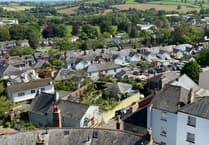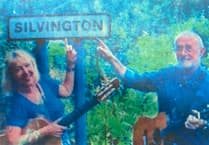More than 700 badgers were slaughtered in the South Hams last year as part of the controversial badger cull, claim anti-cull protesters.
The 727 animals were shot as part of the cull carried out across South Hams farms during a six-week period which started in September, said artist and anti-cull campaigner Ama Menec. She claimed another 29 were “shot but unaccounted for”.
She warned the cull would have a “dire” impact on the biodiversity of the area – from rabbits to rare butterflies. And she is appealing for people to help safeguard badgers by encouraging them to stay on land where there is no cull taking place.
Ms Menec, who helped organise anti-cull protests in the Totnes area, said: “If you have land, even a large garden, and you have badgers nearby which you believe are being persecuted, you can set aside a quiet slope for them to use as a home.
“Feed them regularly at or near this site, or create an artificial sett for them if they don’t get the message that they are safe here, and continue to feed them there to prevent them straying onto neighbouring land. Specially formulated badger food can be found in pet shops in Totnes and Dartington.
“If you live near a sett and want to keep its occupants safe, photograph and check on it regularly, so you can monitor signs of illegal persecution.
“Outside of a badger cull zone and the six weeks of an official badger culling period, it is still illegal to persecute badgers and it is never, at any time, legal to block or dig over a badger sett. Report such persecution, with images, to the police and to the Badger Trust immediately. ”
The extent of the badger cull was extended last year to include 21 zones covering half of Devon, Dorset and Wiltshire, said Ms Menec.
Anti-cull campaigners in the South Hams organised regular badger patrols during the period of the cull to walk public footpaths in cull zones and rescue trapped badgers.
Ms Menec warned: “Given the fragile state our ecosystems are currently in, the timing of these badger culls could not be worse.
“The environmental consequences via a trophic cascade are truly dire, particularly for coastal regions such as ours, and we shall expect to see a massive decline in biodiversity as well as a large rise in the fox population where badgers are locally extinct.”
She added: “From rabbits and hares to ground nesting song birds and coastal waders, from heath plants to rare butterflies that rely on them, and gentians to orchids, all impacted by a sudden tilting of the ecological balance caused by a widespread badger cull and localised extinction of badgers.
“Badgers are a keystone species, largely responsible for the biodiversity of hedgerows as they place their latrines at field margins and natural boundaries, so improving the variety of fruits and berries to be found there. Other ecological services such as mice and rat control will also be lost with the decline and elimination of our local badgers.”
NFU president Meurig Raymond said in 2016: “Bovine TB remains a huge threat to beef and dairy farmers in large parts of the country. More than 28,000 cattle were slaughtered in England last year because of it and nearly 4,000 herds that had previously been clear of the disease were affected by it.”
Mr Raymond added: “There is still a huge amount of work ahead to ensure the eradication of bTB from this country and I would like to take this opportunity to thank farmers for their continued support in working towards this goal.
“The chief vet has made it clear that dealing with the disease in both cattle and badgers is essential to tackling the disease effectively and that proactive badger control is currently the best available option for dealing with the disease in badgers.”




